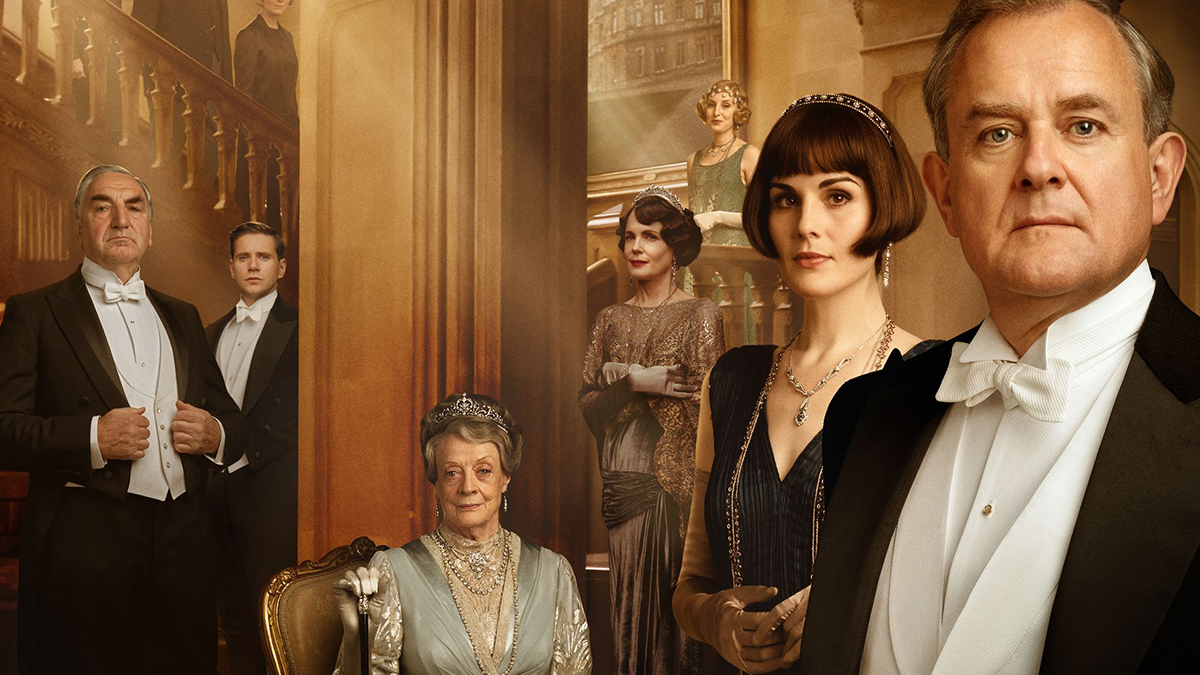Plenty of British entertainment exports have enjoyed significant popularity here in North America, between well-known examples like Harry Potter, 007 and Doctor Who, who are now arguably just as popular outside of England as they are within their native land. While the Boy Who Lived, the world’s greatest superspy and the most enduring and compassionate of the Time Lords have now become household names worldwide however, one other notable British sensation that seems happy to enjoy more reserved global popularity is Downton Abbey. Originally being conceived as a British period drama for U.K. station, ITV, Downton Abbey began amassing a significant international fanbase once it expanded to the Americas via PBS, with the show subsequently enjoying a very healthy and well-received six seasons on the air, before it aired its final episode during Christmas of 2015.
Of course, the death of a beloved television show in the modern era practically qualifies as comic book death, since plenty of shows have been resurrected after their cancellations in recent years, whether in follow-up seasons on new platforms (or sometimes even the old ones!), spin-offs that revisit the same world from the perspectives of new characters, or revival movies that continue the events of a show after its proper television run has ended. Downton Abbey is now the latest addition to the esteemed selection of television shows that have managed to defy the small screen’s reaper. The red carpet is being rolled out to boot, since the much-anticipated Downton Abbey movie is getting a full-blown theatrical release as well, even here in North America!
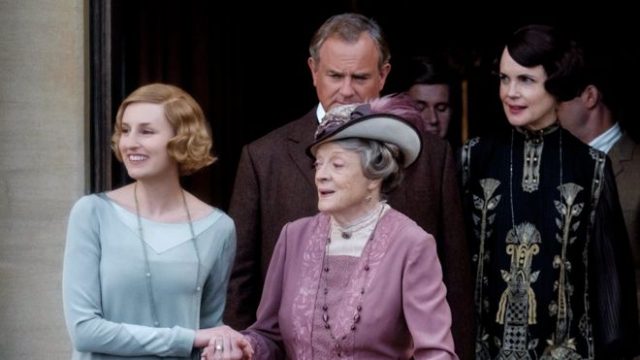
As with many cinematic revivals of U.K. television shows in particular, Downton Abbey largely picks up on the exact same gear that it originally departed on as well, with a carefree spring in its step that suggests it had never actually left over the past four years. True to form for many U.K. television-to-movie revivals then, the Downton Abbey movie is thus designed primarily for established fans of the show, but of course, those people are certainly not in short supply. If you happen to be a non-fan of Downton Abbey, the movie is still plenty watchable as well, being a witty and classy romp that provides a good condensation of the appeal behind the show, even if you’d better study up before you go in that case! The Downton Abbey movie doesn’t actually stop to introduce or re-establish any returning personalities or storylines for viewers who don’t already know the original television series back-to-front, so non-fans need not apply here, or at the very least, non-fans had better be willing to do some homework first!
There are numerous personalities at play in Downton Abbey, with just about every major personality that survived into the show’s final episode making at least some degree of a return appearance for the cinematic revival. The exceptions are Lily James’ Lady Rose MacClare and Samantha Bond’s Lady Rosamund Painswick, who don’t end up returning for the movie, though fans will nonetheless have plenty of familiar faces to reunite with, on top of the entertaining new additions. Said new additions are spearheaded by the introduction of King George V, played by Simon Jones, and Queen Mary, played by Geraldine James, along with their disagreeable staff, whose arrival at the titular Downton Abbey kickstarts the movie’s collection of events in earnest.
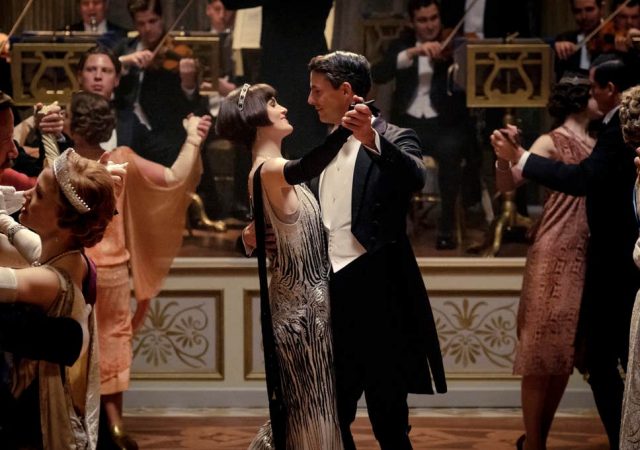
As I said though, if you’re not already a Downton Abbey fan, the movie won’t waste time getting you up to speed. This may be a relief for fans who don’t want to hear establishing information that they no doubt already know, though it also creates an issue for anyone who hasn’t already fallen in love with the original television series. The familiar characters, and the actors who portray them, are as enjoyable as ever for series fans though, particularly Maggie Smith as the comically arrogant and sharp-tongued Dowager Countess Violet Grantham, who shoulders the bulk of the Downton Abbey movie’s laughs alongside her reliable foil, Penelope Wilton’s Lady Isobel Grey. The surviving Crawley women are all back in force throughout this movie in fact, with their spouses and children also joining the fun to a noticeably lesser extent, even if Matthew Goode’s Henry Talbot gets rather thanklessly shoved into the movie’s epilogue, in order to complete the show’s roll call of Crawley husbands.
Meanwhile, aside from the royals and their servants, the other major new addition to the Downton Abbey movie’s cast is Imelda Staunton, reuniting with her former Harry Potter co-star, Maggie Smith as an all-new character, Lady Bagshaw, Queen Mary’s lady-in-waiting, who also happens to the estranged cousin of Lord Grantham. Lady Bagshaw’s family fell out with the Crawley brood after a supposed inheritance issue, but as you can imagine, there’s plenty more to that story, even if a lot of it is a pretty transparent excuse to give highlight performer, Maggie Smith another recognizable foil to play off of. There’s plenty of quirky drama to go around with everyone regardless though, even if it’s the royals and Smith that make the biggest impression among the rather massive ensemble cast. I won’t spoil any of the character details either, since the Downton Abbey movie clearly wants fans to know as little about it as possible before going in, due to the sheer amount of surprise plot turns that are eagerly waiting to tickle the television show’s established following.
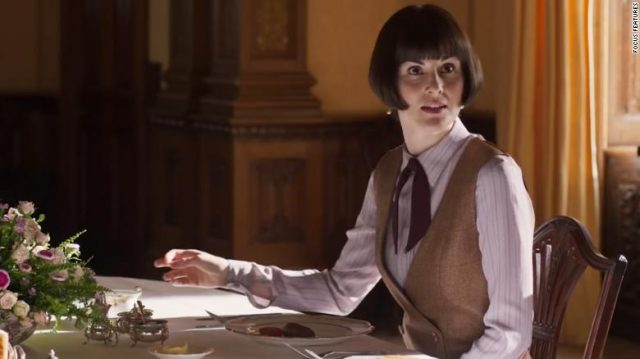
A quick recap/primer during the Downton Abbey movie’s intro would have been appreciated though, since there’s no doubt many a begrudging spouse that’s being dragged to this movie by avid Downton Abbey fans. Then again, I suppose that the ludicrous amount of far-reaching, yet strangely lovable drama that continues to surround Downton Abbey is so overabundant that perhaps it would be impossible to get non-fans primed for all of the mishaps and verbal scuffles that unfold during this movie’s runtime. Still, if you don’t know these personalities already, you’ll likely identify them more by their storylines than their personalities, with Smith, Wilton, Staunton and the royals being the only standout exceptions, alongside another established television personality, Robert James-Collier’s Thomas Barrow, who headlines one of the more memorable story arcs of the movie after attempting to pursue a more direct line to love as a gay man in the 1920’s. There’s a lot to keep track of among the many characters of Downton Abbey, so hopefully you’ve done your homework, even if the uninitiated will still at least find plenty of lovably sharp performances between the actors.
The Downton Abbey movie is one of those strange cinematic cases wherein it simultaneously feels like it has an incredible abundance of story, and yet also no story at all. There’s definitely an inciting incident at least, with everything being kicked off by the announcement that King George V and Queen Mary are coming to visit Downton Abbey on their way to a ball in 1927, about a year after the events of the TV show’s series finale from 2015. From there however, a bunch of smaller storylines simply end up colliding amid the over-arching device of the British royals of the era coming to visit Downton Abbey. This provides a fairly fun and emotionally effective selection of little character-driven sidestories to comprise the bulk of the movie, but some of these are definitely better and more memorable than others, particularly for people who are not established fans of Downton Abbey.
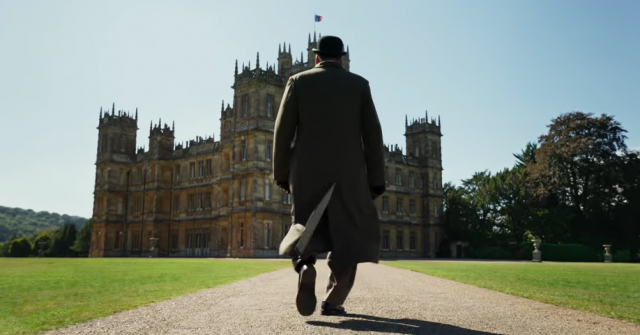
It may not shock you then that the Downton Abbey movie is still presenting its story structure in the style of a TV series, and not a dedicated movie experience. The movie operates as if it’s condensing a season-long arc (in this case, the royals’ visit), into a two-hour runtime, alongside the miniature storylines that unfold and are resolved within the space of said overall arc. Downton Abbey fans will be none too fussed about this, since this story structure is being done in a style that they’re used to, albeit sped up in the space of a two-hour runtime, but those expecting an actual movie structure from the Downton Abbey movie will likely be frustrated with it. This is primarily because its TV-inspired structure ensures that most of the storylines in the movie are so cleanly resolved that they mostly end up going nowhere, constantly reverting back to an established status quo at hyper-speed, as if we’re watching an entire additional season of Downton Abbey being quickly run through on the big screen, in fast-motion.
I suppose it’s fair enough however that the Downton Abbey movie is primarily designed for people who already love the TV show that inspired it. Despite the fact that the ‘story’ of the movie is a narrative car crash of various disconnected conflicts and drama, which lands with a kitchen sink approach that leaves the Downton Abbey movie’s storytelling structure feeling rather scattered and disjointed at times, it’s tough to really get angry about this. This is because the storytelling, despite its messiness, is all done in an entertaining and surprisingly charming way, one that’s very true to the flavour of the TV show. If nothing else, Downton Abbey has clearly perfected the art of being a strangely amiable period soap opera, albeit one that’s executed with a flair for old-world wit and class. It’s great that a lot of that magic is maintained in the movie as well, which, when judged by the standards of the TV series, manages to stand as a genuine return to the show’s finest small screen story quality. When judged as an actual standalone movie experience, the Downton Abbey movie’s plot offering feels like a bit of a dopey, scattershot mess to be sure, but that’s why it’s best to treat it as a continuation for a TV series that’s already stolen the hearts of many a viewer, who will find that the titular abbey is just the way they left it, for better or for worse.
The Downton Abbey movie is directed by Michael Engler, who previously directed four episodes from the TV series, including its series finale. Engler’s direction no doubt also explains why the Downton Abbey movie feels more like several all-new episodes of the show mashed into one big screen package, rather than an independently-standing cinematic offering. Again though, it’s doubtful that fans of the original TV show will be bothered by this, since Engler’s direction nicely maintains continuity from where the Downton Abbey series previously ended in 2015, and where its revival movie picks up in 2019.
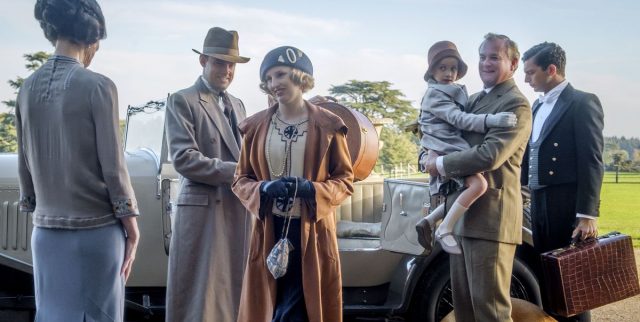
The trade-off to this however is that the Downton Abbey movie still feels like it’s mostly in the realm of television-level production value, which is made more apparent when it’s viewed on the big screen. The movie still looks nice enough though, since Downton Abbey’s original TV incarnation was already one of the most gorgeous and period-faithful shows that you could experience on ITV/PBS. Still, if you were expecting significant production upgrades from Downton Abbey’s television run, the movie doesn’t quite offer that, even if it still manages to look pretty respectable in a movie theatre. Like I said though, this is a movie made specifically for established fans of the TV series, so it’s perhaps best that the Downton Abbey movie more or less leaves its direction and presentation the same as it was on the small screen, allowing it to function as heartwarming comfort food for people who have already sunk years of their viewership into these many characters, and their still-lingering challenges.
The Downton Abbey movie succeeds at what it aims to be– A no-strings return to the world of a beloved TV show that has captivated tens of millions of people across the world. If you’re not already a fan of Downton Abbey, there’s little reason to see this movie, which is very proudly and unapologetically made for people who already love the TV series that inspired this big screen offering. As long as you’re attending with at least one fan of the show though, who can brief you on the staggering amount of personalities and conflicts on display here, you’ll have a decent amount of fun as a non-fan. If you’re already an avid fan of Downton Abbey however, then you’re bound to love this movie, even with its questionably-translated storytelling style. After all, this movie brings the show’s continuing canon back to top form, with some especially entertaining writing, and lots of ultimately innocuous, but still fairly compelling bits of throwaway drama.
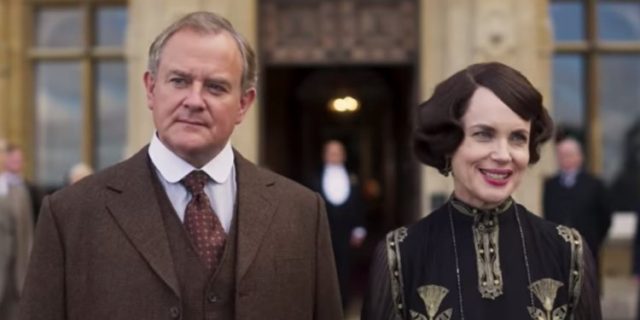
Perhaps it’s a missed opportunity for Downton Abbey to not try and court new fans with a more self-contained and cohesive movie offering, or even to touch up the sets and world as it existed on television, but maybe playing it safe was nonetheless the right call for this movie. It is admittedly pretty entertaining to watch in the moment, even for an open-minded non-fan of the TV series. Meanwhile, for established Downton Abbey fans, the movie won’t present much in the way of exciting new storytelling frontiers, despite the hullabaloo around the royal family’s visit, but it’s a comforting and likable homecoming that will warm the hearts and lift the spirits of people who were sad to initially bid farewell to these characters back in 2015. The Downton Abbey movie is thus best treated as a two-hour victory lap for the TV series, and not as a movie on its own merits. That being said, even if this movie’s crowded and chaotic set of characters and conflicts is bound to overwhelm the uninitiated, those who know what they’re getting into are bound to enjoy picking up where the beloved Downton Abbey TV series left off, even if just for a little while.

